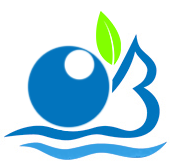Kashk is a range of dairy products used in cuisines of Iranian, Turkish, Mongolian, Central Asian, Transcaucasian, and the Levantine peoples. Kashk is made from drained yogurt (in particular, drained qatiq) or drained sour milk by forming it and letting it dry. It can be made in a variety of forms, including rolled into balls, sliced into strips, and formed into chunks.
There are three main kinds of food products with this name: foods based on curdled milk products like yogurt or cheese; foods based on barley broth, bread, or flour; and foods based on cereals combined with curdled milk.
Kashk is a sort of gruel of fresh cheese. It is eaten plain, but can be used other ways. For example, it can be dissolved in water and eaten like yogurt. In western parts of Azerbaijan, it’s customary to dissolve qurut in water by hand and use the sauce with xəngəl, the traditional Azerbaijani lasagna-type dish. Qurut dissolved in water is a primary ingredient of qurutob, a traditional Persian dish in Tajik, Afghan and Iranian cuisine] and thought of by some as the national dish of Tajikistan. One of the main dishes in Afghanistan is kichree qurut, made with mung beans, rice and qurut dissolved in water. It is sometimes salted, and in Inner Mongolia can be flavoured and distributed as candy.
Qurt from Kazakhstan
Chortan is mentioned in the Armenian epic poem, Sasuntsi Davit, as an oral tradition dating from 8th-century, which was first put into written form in 1873. Chor means dry in the Armenian language. Kashk is also mentioned in the 10th-century Persian book of poetry Shahnameh. Khoshk meaning “dry” which indicates that the kashk or kishk is prepared through a drying process. Qurut or kurut means dried in Turkic languages.
Iranian kashk
In modern Iran, kashk is a thick whitish liquid similar to whey or sour cream, used in traditional Persian and Kurdish cuisine, like ash reshteh, kashk e badamjan, kale joush. It is available as a liquid or in a dried form, which needs to be soaked and softened before it can be used in cooking. Kashk was traditionally produced from the leftovers of cheese-making (more specifically, the milk used to make it). The procedure is, subtracting butter from milk, the remainder is doogh which can be used as the base for kashk. The water is subtracted from this whitish beverage and what remains is kashk which can be dried. Iranian kashk has made an appearance in US markets in the past half-century by several Iranian grocers starting with Kashk Hendessi.
